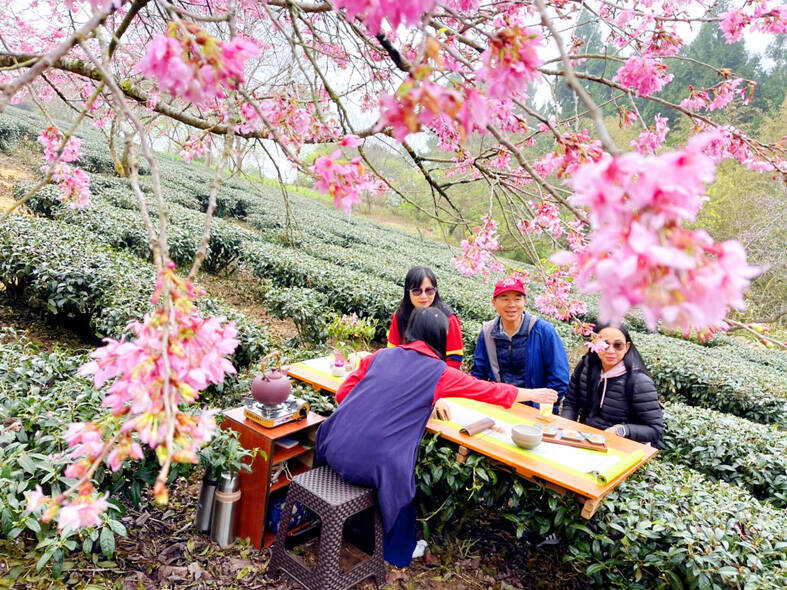《TAIPEI TIMES》 Improved technology detects origins, prevents foreign leaves in local tea

People drink Alishan high-mountain tea on Alishan in Chiayi County in an undated photograph. Photo courtesy of the Chiayi County Government via CNA
By Tsai Tsung-hsun and Sam Garcia / Staff reporter, with staff writer
Thanks to improved identification technology, foreign tea leaves are no longer mixed with domestic ones in local markets, protecting the rights of tea farmers and consumers, Tea and Beverage Research Station director Su Tsung-chen (蘇宗振) said yesterday.
Four years ago, the station developed a highly accurate method of determining the origin of tea leaves by testing the trace elements in them.
The Ministry of Health and Welfare in June last year approved the testing method, and it was transferred to private testing companies.
As every country’s soil, rock formations and trace elements are different, the station’s identification technology tests the trace elements in each tea leaf sample to determine their origin, Su said.
Origin identification must rely on stable elements, he said.
DNA or other components are not analyzed because proteins, carbohydrates and amino acids change with storage time and environmental conditions, Su said.
Trace elements such as heavy metals are much more stable, which is why the station developed this testing method, he said.
It became a nationally recognized method after the Food and Drug Administration recommended it in 2021, Su said.
With the right administrative inspections and traceability measures, this testing method has an accuracy rate as high as 98.9 percent, he said.
This is good news for the public, as it ensures the interests of Taiwanese tea farmers and rights of consumers by clearly identifying the origin of tea leaves, he added.
新聞來源:TAIPEI TIMES












